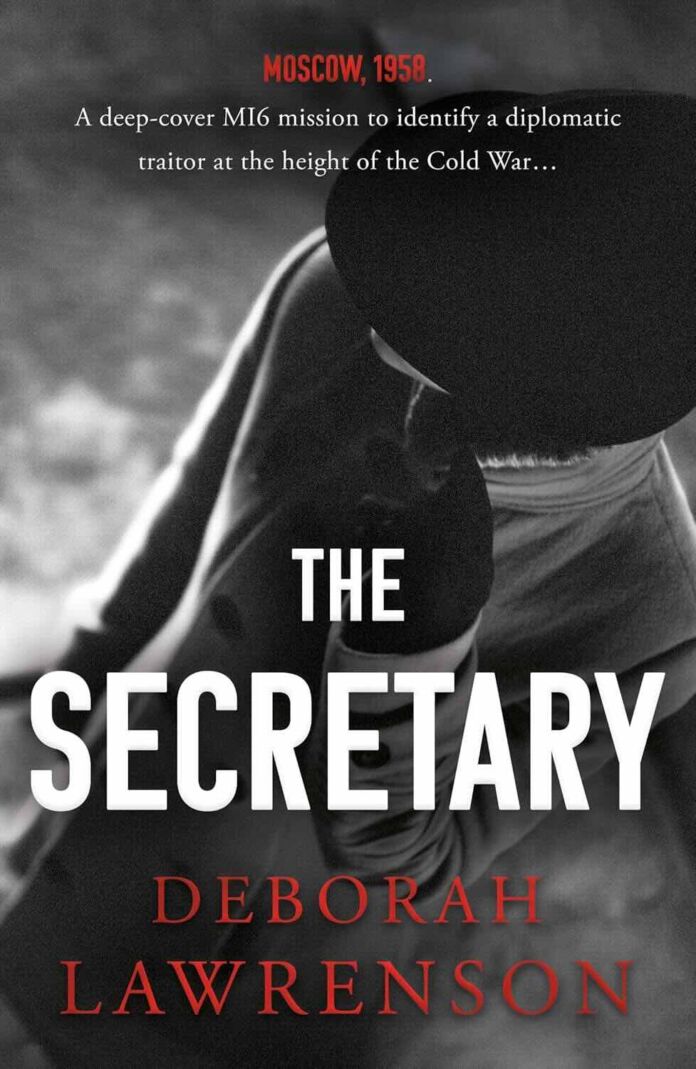In The Secretary, Deborah Lawrenson masterfully reimagines the Cold War espionage genre through the fresh perspective of a young female MI6 operative. Set against the backdrop of 1958 Moscow, this meticulously researched novel offers readers an intimate glimpse into the hidden world of Cold War intelligence operations while breaking new ground in its portrayal of women’s roles in this male-dominated arena.
A Rich Tapestry of Cold War Moscow
Lawrenson’s depiction of late 1950s Moscow is extraordinarily vivid and immersive. The author brings to life a world where every conversation might be recorded, every friendship could mask ulterior motives, and trust is a dangerous commodity. Through protagonist Lois Vale’s eyes, we experience the peculiar atmosphere of diplomatic life behind the Iron Curtain – the jarring contrast between elaborate embassy parties and constant surveillance, between Western luxuries and Soviet deprivation.
The physical environment of Moscow becomes a character in itself – from the imposing architecture of the Kremlin to the cramped, bug-ridden apartments where embassy staff live under constant observation. Lawrenson’s attention to detail extends to the smallest aspects of daily life, from the challenges of finding decent food to the complex social dynamics within the diplomatic community.
Character Development: A Masterclass in Subtlety
Lois Vale emerges as one of the most compelling protagonists in recent spy fiction. Her intelligence, adaptability, and quiet strength make her an ideal operative, while her working-class background and gender add extra layers of complexity to her mission. Lawrenson skillfully develops Lois’s character through her interactions with various embassy personalities and her growing relationship with Johann, her German journalist contact.
The supporting cast is equally well-drawn. From the enigmatic Tony Fielding to the observant Bill Stoneley, each character serves a distinct purpose while maintaining their own complex motivations and personalities. Particularly noteworthy is the portrayal of Sonia, Lois’s unstable flatmate, whose presence adds both psychological tension and a sense of the toll that Moscow life takes on those ill-equipped to handle it.
Themes and Deeper Meanings
Power Dynamics and Control
The novel expertly explores various forms of power—institutional, personal, and political. Through Lois’s experiences, we see how control is exercised not just between nations, but within organizations and relationships. The author particularly excels in depicting the subtle power plays within the embassy hierarchy and the ways in which information becomes currency in the intelligence world.
Truth, Deception, and Survival
A central theme is the nature of truth in a world built on lies. The story constantly challenges readers to question what is real and what is manufactured, mirroring the protagonist’s own journey. Lawrenson explores how living in a world of deception affects those who must practice it daily, and the psychological toll of maintaining multiple identities.
Gender and Class in the Intelligence World
Perhaps most significantly, the novel examines the additional challenges faced by women in the male-dominated world of espionage, particularly those from working-class backgrounds. Lois must navigate not only the dangerous waters of international espionage but also the social prejudices of her own colleagues and superiors.
Technical Excellence in Writing
Lawrenson’s prose style perfectly suits the material—elegant yet precise, with moments of literary beauty that never impede the narrative momentum. The pacing is expertly handled, building tension gradually while allowing space for character development and atmospheric detail.
The author demonstrates particular skill in writing dialogue that feels authentic to the period while conveying both character and plot information. Conversations crackle with tension and subtext, reflecting the duplicitous nature of the characters’ world.
Historical Detail and Research
The level of historical accuracy is impressive throughout. From the specific layout of the British Embassy in Moscow to the intricacies of diplomatic protocol, Lawrenson’s research shines through without overwhelming the narrative. The author seamlessly incorporates actual historical events and figures into the story, lending additional credibility to the fictional elements.
Key Narrative Elements
Embassy Life and Social Dynamics
The novel excels in its portrayal of the closed world of embassy life, with its complex social hierarchies and unwritten rules. Lawrenson captures both the tedium of diplomatic routine and the underlying tensions that make every social interaction potentially significant.
Operations and Tradecraft
The intelligence operations depicted in the novel feel authentic and well-researched. The author pays careful attention to the technical aspects of espionage while maintaining focus on the human elements that make such operations succeed or fail.
Personal Relationships Under Pressure
The development of the relationship between Lois and Johann is particularly well-handled, with the personal and professional aspects of their connection becoming increasingly intertwined. The author explores how romance might flourish in an environment of universal suspicion.
Structure and Pacing
The novel’s structure is carefully crafted to build tension while maintaining narrative clarity. Lawrenson moves skillfully between the immediate action of Lois’s mission and broader geopolitical events, keeping readers engaged on multiple levels.
Historical Context and Relevance
Deborah Lawrenson’s The Secretary makes a valuable contribution to our understanding of Cold War history by highlighting the often-overlooked role of women in intelligence operations. The author’s attention to historical detail extends beyond the major political events to encompass social attitudes and daily life in the period.
Comparison with Genre Classics
While the novel will appeal to fans of classic Cold War spy fiction such as John le Carré’s work, it offers a fresh perspective on the genre. Lawrenson’s focus on a female protagonist and attention to social dynamics within the intelligence community sets the book apart from traditional male-centered espionage narratives.
Impact on the Genre
The Secretary by Deborah Lawrenson represents an important addition to the spy fiction genre, demonstrating how historical espionage novels can engage with contemporary concerns about gender and power while maintaining period authenticity. The book’s success in combining historical accuracy with compelling storytelling sets a new standard for the genre.
Technical Achievements
Plot Construction
The story is intricately plotted, with various threads that come together satisfyingly in the final act. Lawrenson maintains suspense while keeping the narrative coherent and believable, no small achievement given the complexity of the spy world she depicts.
Character Relationships
The interactions between characters are particularly well-handled, with relationships developing naturally despite the artificial environment in which they exist. The author shows special skill in depicting the ways in which professional and personal relationships become entangled in the intelligence world.
Setting and Atmosphere
The author’s attention to detail in recreating Cold War Moscow and other locations adds credibility and atmosphere to the narrative. The physical environment becomes an active participant in the story, influencing characters’ actions and decisions.
Final Analysis
The Secretary by Deborah Lawrenson succeeds on multiple levels—as a spy thriller, as historical fiction, and as a character study. Lawrenson’s skill in balancing these elements while maintaining narrative momentum is impressive. The novel makes a significant contribution to the genre while telling a compelling story that will engage readers regardless of their familiarity with Cold War history.
The book’s greatest achievement lies in its portrayal of a woman navigating a man’s world while maintaining her own identity and principles. Through Lois Vale, Lawrenson gives voice to the many women whose contributions to Cold War intelligence work have gone largely unrecognized.
Having received an advance review copy of this remarkable novel, I’ve had the privilege of spending considerable time with Lawrenson’s work. This early access has allowed me to appreciate the intricate layers of the narrative, from its meticulous historical research to its nuanced character development. Like the secret messages passed between agents in the story, this advance copy revealed its treasures gradually, rewarding careful attention and multiple readings. The author’s achievement in crafting such a compelling and authentic narrative deserves recognition, and I’m grateful for the opportunity to experience it ahead of its general release.





